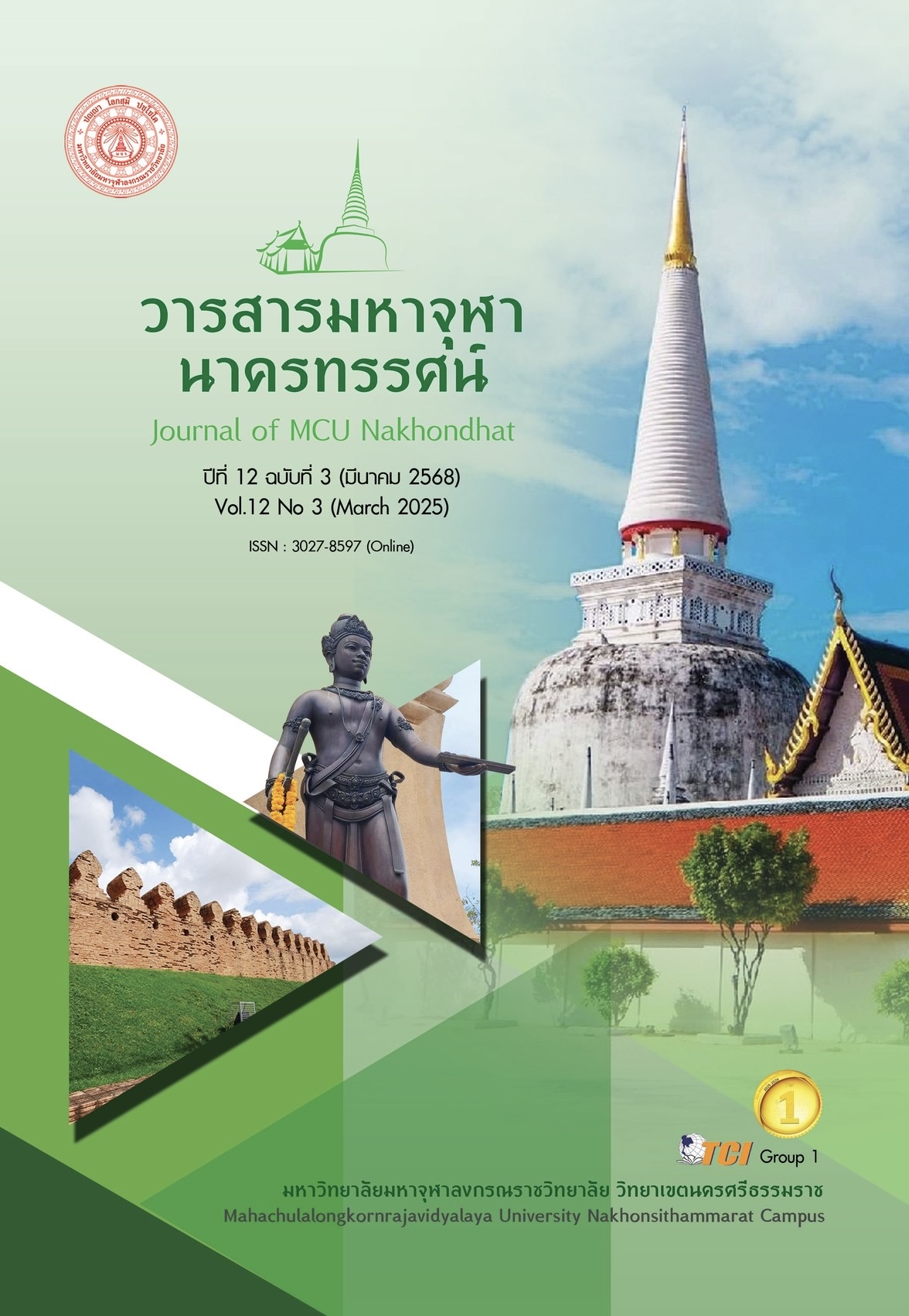THE REPRESENTATIONS OF NARCOTICS IN THAI NOVELS
Main Article Content
Abstract
The purpose of this article aims to investigate the representations of narcotics and perspectives on narcotics in such literary works. The study focuses on Thai novels that feature narcotics-related narratives, either as primary or secondary themes, published between 1961 and 2011. There were 22 novels that met the selection criteria, with the last novel meeting the criteria being in 2011. The sample group used in this article consisted of 9 novels. This was qualitative research, with a purposive sample selection. Data was analyzed in a descriptive format, applying the concept of representation and the representations and perspectives in literature to analyze the language used in communicating narcotics that led to the presentation of narcotics representations and perspectives on narcotics in Thai novels. The findings reveal six distinct representations of narcotics in Thai novels: Narcotics as destructive to life, narcotics as detrimental to society and the nation, narcotics as specific social behaviors, narcotics as causes of alienation, narcotics as normalized elements in society, and narcotics as livelihood factors for users. These representations illustrate negative, neutral, and positive perspectives on narcotics that align with social narcotics phenomena. Through these narcotics representations and perspectives, the authors establish connections between ideas, beliefs, social values, and social narcotics phenomena through narcotics-related language in novels that closely mirrors real-world language, making the representations and societal perspectives on narcotics in these novels substantially correspond with actual narcotics occurrences in society.
Article Details

This work is licensed under a Creative Commons Attribution-NonCommercial-NoDerivatives 4.0 International License.
References
กฤษณา อโศกสิน (นามแฝง). (2550). ข้ามสีทันดร. (พิมพ์ครั้งที่ 4). กรุงเทพมหานคร: เพื่อนดี.
จารุณี ศิริพันธุ์. (2558). วาทกรรมเกี่ยวกับสารเสพติด: ปฏิบัติการทางสังคมวัฒนธรรม. ใน วิทยานิพนธ์ศิลปะศาสตรมหาบัณฑิต สาขาการจัดการทรัพยากรวัฒนธรรม. มหาวิทยาลัยศิลปากร.
ชาติ กอบจิตติ (นามแฝง). (2539). คำพิพากษา. (พิมพ์ครั้งที่ 25). กรุงเทพมหานคร: หอน.
โบตั๋น (นามแฝง). (2546). แม้นรกมากั้น. กรุงเทพมหานคร: สุวีริยาสาส์น.
ดวงตะวัน (นามแฝง). (2546). รักแผลงฤทธิ์. กรุงเทพมหานคร: พิมพ์คำ.
ม. มธุการี (นามแฝง). (2529). ทางสายทาส เล่ม 1. กรุงเทพมหานคร: ศิลปาบรรณาคาร.
ม. มธุการี (นามแฝง). (2529). ทางสายทาส เล่มจบ. กรุงเทพมหานคร: ศิลปาบรรณาคาร.
ม. มธุการี (นามแฝง). (2543). ไร้แรงบิน. กรุงเทพมหานคร: ดับเบิ้ลนายน์.
สำนักงานคณะกรรมการป้องกันและปราบปรามยาเสพติด. (2553). ความรู้และแนวทางการป้องกันและแก้ไขปัญหายาเสพติด. (พิมพ์ครั้งที่ 2). กรุงเทพมหานคร: บางกอกเทคโนโลยี่สแกนนิ่งแอนด์เซอร์วิส.
สุจิตตา ฤทธิ์มนตรี และกฤตยา แสวงเจริญ. (2554). พฤติกรรมรุนแรงต่อครอบครัวของผู้ใช้ยาบ้า. วารสารพยาบาลศาสตร์และสุขภาพ, 34(3), 48-56.
สุรเดช โชติอุดมพันธ์. (2548). วาทกรรม ภาพแทน และอัตลักษณ์ วรรณคดีศึกษาในบริบทสังคม และวัฒนธรรม 2. ใน เอกสารประกอบการบรรยาย. คณะอักษรศาสตร์ จุฬาลงกรณ์มหาวิทยาลัย.
สุรเดช โชติอุดมพันธ์. (2560). จากวัฒนธรรมศึกษาสู่วรรณกรรมวิจารณ์. ใน รื่นฤทัย สัจจพันธุ์ (บรรณาธิการ). ทฤษฎีกับการวิจารณ์ศิลปะในทัศนะของนักวิชาการไทย. (532 - 593). กรุงเทพมหานคร: นาคร.
สุวรรณี สุคนธา (นามแฝง). (2540). ดอกไม้ในป่าแดด. กรุงเทพมหานคร: ดอกหญ้า.
สุวรรณี สุคนธา (นามแฝง). (2543). มายา เล่ม 1. (พิมพ์ครั้งที่ 2). กรุงเทพมหานคร: ดอกหญ้า.
สุวรรณี สุคนธา (นามแฝง). (2543). มายา เล่ม 2. (พิมพ์ครั้งที่ 2). กรุงเทพมหานคร: ดอกหญ้า.
สุวรรณี สุคนธา (นามแฝง). (2544). ทะเลฤาอิ่ม. กรุงเทพมหานคร: ดอกหญ้า.
Hall, S. (1997). Representation: Cultural representations and signifying practices. London: Sage.
Macherey, P. (1978). A Theory of Literary Production. London: Routledge and Kegan Paul


